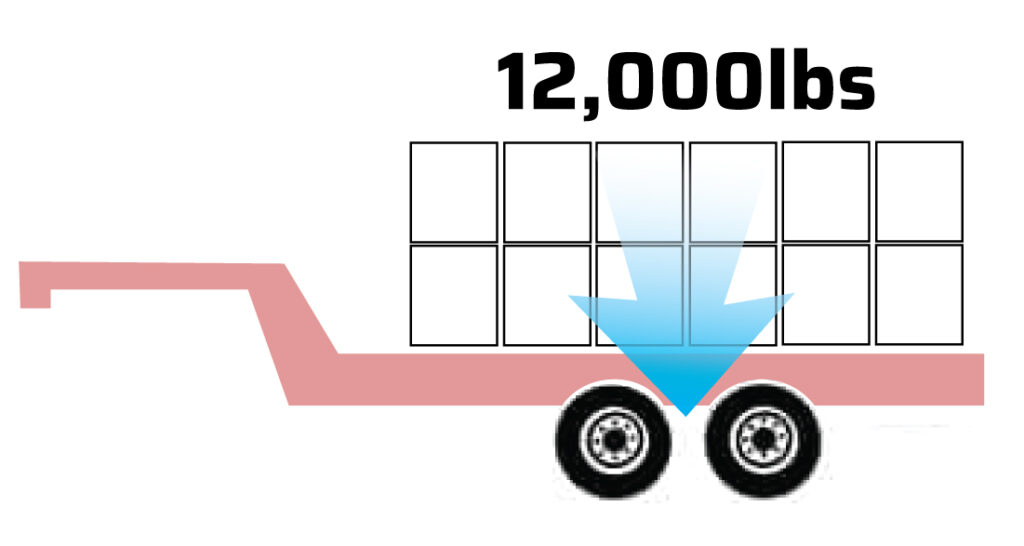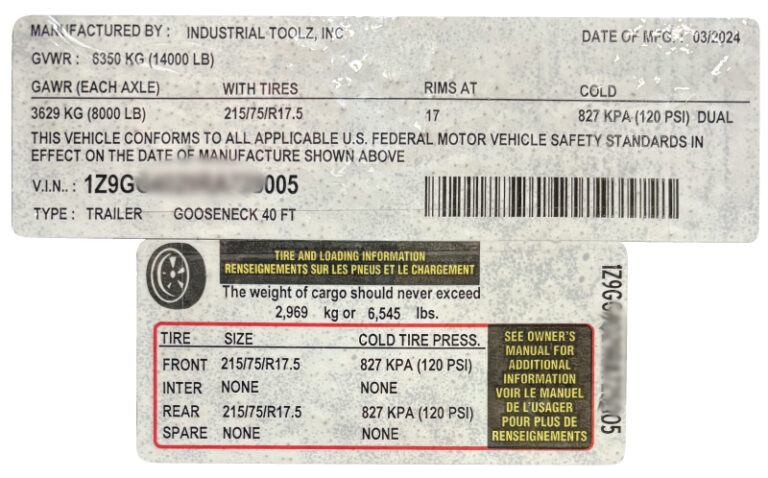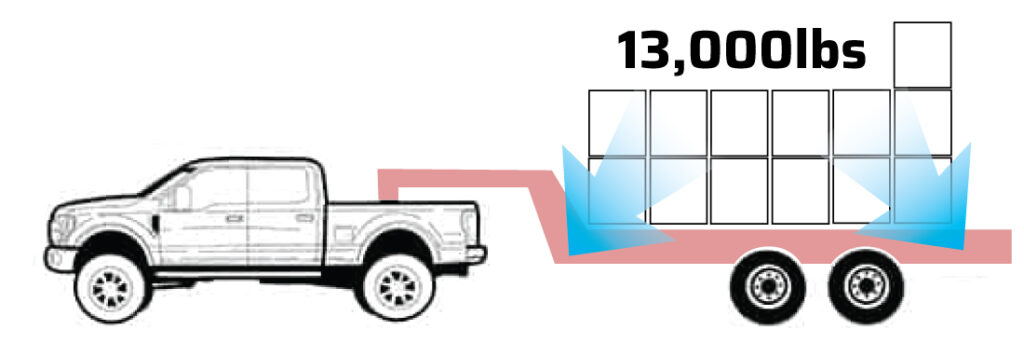Understanding GVWR:
Why Can It Exceed Axle Capacity?

So, you’re in the market for a trailer, but the concept of Gross Vehicle Weight Rating (GVWR) has you scratching your head. You’re not alone. GVWR can be a bit confusing, especially when you see it listed higher than the sum of the trailer’s axle capacities. For example, if a trailer has two 6,000-lb axles (12,000-lb total), how can the GVWR of the trailer be 13,000 lbs? But fear not, we’re here to provide clarity to this topic and give you the lowdown on how GVWR works and why it can exceed the capacity of its axles.
What is GVWR and Why Does It Matter?
Let’s start with the basics. GVWR, or Gross Vehicle Weight Rating, is the maximum weight that a trailer is either designed or rated to safely carry, including its own weight and the weight of its cargo. Essentially, designed GVWR is the total amount of mass that the trailer can handle over the normal useful life of the trailer without compromising safety or structural integrity.
Understanding GVWR is crucial because exceeding this limit can lead to serious safety hazards, including brake failure, tire blowouts, and even structural damage to the trailer. It’s like the weight limit sign on a bridge – you wouldn’t want to exceed it and risk disaster.
Where Can You Find Your Trailer’s GVWR?

So, how do you know what your trailer’s GVWR is? Well, it’s typically listed on a placard attached to the trailer, usually near the tongue or on the driver’s side. This placard provides important information about the trailer’s weight ratings, including its GVWR, Gross Axle Weight Rating (GAWR), tire size, and other specifications.
If you can’t find the placard or it’s worn off, you can sometimesusually find the GVWR stamped into the trailer’s frame. It’s important to know your trailer’s GVWR before loading it up to ensure you’re within safe operating limits.
How Does GVWR Affect CDL Requirements?
The placard GVWR, (rather than the designed GVWR) plays a significant role in determining whether you need a Commercial Driver’s License (CDL) to tow a trailer. In the United States, if the GVWR of your trailer and the combined GVWR of your towing vehicle and trailer exceed 26,000 pounds, you may be required to have a CDL, depending on your state’s regulations.
This means that even if your towing vehicle has a lower GVWR than the trailer, the combined weight could still trigger CDL requirements. It’s essential to check your state’s specific regulations regarding CDL requirements to ensure compliance. While a CDL is certainly a nice thing to have, the associated fees and educational requirements can make them difficult to access or unnecessary based on the loads you intend to haul. Be mindful of this if you’re looking to get your first trailer, as many use-cases (including hot-shotting) do not necessarily require a CDL.
The Relationship Between GVWR and Axle Capacity
Now, let’s address the question at hand: How can the GVWR of a trailer exceed the capacity of its axles? To understand this, we need to delve into the concept of tongue weight.
Tongue Weight: When you load cargo onto a trailer, a portion of that weight is transferred to the towing vehicle through the trailer’s hitch, known as tongue weight. This weight is not directly supported by the trailer’s axles but instead by the towing vehicle’s suspension and tires.
Axle Capacity vs. GVWR: Trailer manufacturers take into account the expected tongue weight when determining a trailer’s GVWR. While the axles bear the brunt of the cargo weight, they don’t bear all of it. A portion of the loaded weight is distributed to the towing vehicle, thus allowing the GVWR to exceed the sum of the axle capacities.

Example Scenario
Let’s break it down with an example scenario. Say you’re eyeing an 18-foot tandem axle car trailer with 6,000-pound axles. The manufacturer lists the trailer’s GVWR as 13,000 pounds. At first glance, it might seem perplexing that the GVWR exceeds the sum of the axles’ capacities (a combined 12,000 pounds).
But when you consider that a portion of the loaded weight (tongue weight) will be borne by the towing vehicle, it starts to make sense. With a typical tongue weight of around 10-15% of the trailer’s total weight, or 1,300 to 1,950 pounds of a 13,000 pound trailer with cargo, the additional capacity is accounted for by the weight born by the truck.accounts for this distributed load.
Conclusion
In conclusion, while it may seem counterintuitive at first, the GVWR of a trailer can indeed exceed the capacity of its axles. This discrepancy is due to the inclusion of tongue weight in the GVWR calculation, which distributes a portion of the loaded weight to the towing vehicle.
Understanding GVWR is essential for safe towing, as exceeding this limit can have serious safety implications. Always check your trailer’s GVWR before loading it up and ensure you’re within safe operating limits to enjoy a smooth and worry-free towing experience. Happy trails!
